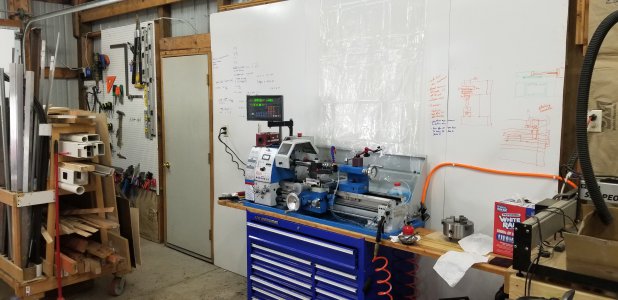Put a couple a sturdy brackets from that wood piece under your lathe into the wall studs. Just make sure that there’s some sort of adjustment on both axis....the part bolting to the wall and part bolting into bottom of wood plank where it can be properly shimmed so it doesn’t twist the lathe bed. You’ll only need 2 brackets to stabilize everything. The box carries the weight and brackets would stabilize everything. Not the perfect lathe stand but a quick fix until you can do better.
That is a good idea. I can easily try it with some clamps to see of there is any improvement. I am sure it will help but that wall is not super sturdy (no vertical studs) so it might not be enough.

